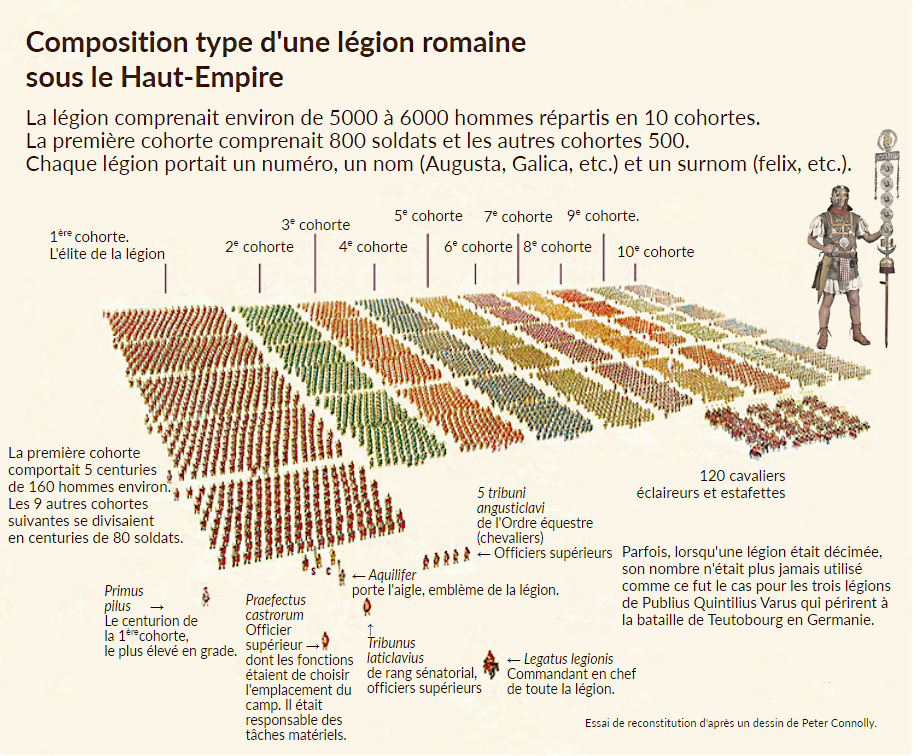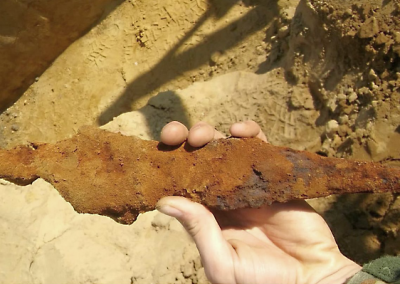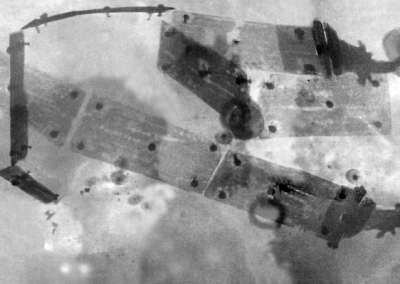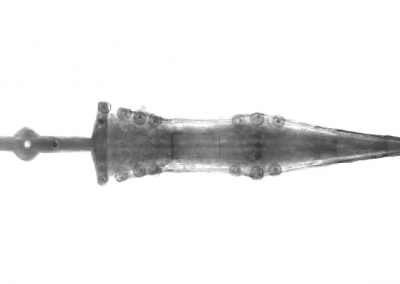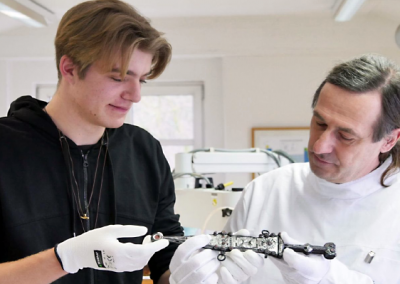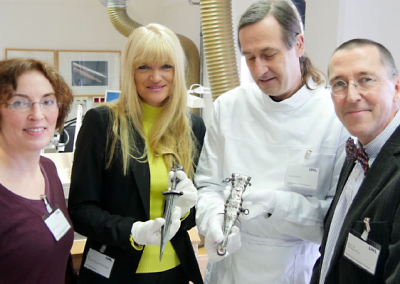
Bible, History, Archaeology
Bible,
History,
Archaeology
The Roman dagger (pugio)
Contents:
Presentation – Composition of a Roman legion – Photo gallery
A dagger (pugio) in its richly decorated scabbard, dating back over twenty centuries, was unearthed in the tomb of a Roman soldier who is thought to have fought against Germanic tribes.
In April 2019, Nico Calman, 19, a trainee at the Westphalian Department of Archaeology, discovered this dagger, its scabbard and some parts of its belt during an excavation in Haltern am See (Haltern-on-the-Lake), a town in the German state of North Rhine-Westphalia.
The dagger (pugio) with its sheath were so corroded that it took nine months of sanding and grinding before the 35-centimetre-long edged weapon could be restored. The scientists were thus able to easily extract the dagger from its richly decorated scabbard.
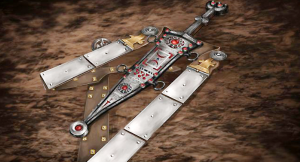
It's certain that even ordinary legionnaires - and not just officers - wore such richly chased scabbards. This meticulous workmanship demonstrates the importance soldiers attached to their appearance. A practice that perhaps also gave them the opportunity to carry their wealth with them, even though the Roman army already had an elaborate banking system that made deductions from pay for the legionary's retirement or funeral.
This discovery is unusual, given that «it was not normal practice for Roman soldiers to be buried with their military equipment».», said Bettina Tremmel, archaeologist at the Westphalian Department for Monument Preservation, a specialist in the Roman Empire who took part in the excavations with the University of Trier.
During the Augustan period, from 27 BC to 14 AD, the site of Haltern-on-the-Lake was home to a Roman military base, comprising several thousand men, known as the «Hauptlager» or «main camp». Archaeologists had known about this site since 1900, which makes the discovery of the dagger all the more surprising.
Roman soldiers stationed at this camp suffered several setbacks against Germanic tribes. Three Roman legions (military units of between 5,000 and 6,000 men), the 17th, 18th and 19th, were wiped out when the Roman general Publius Quinctilius Varus was defeated in 9 AD.
Nearby is a cemetery, where Roman soldiers and their families were buried.
Despite several successful Roman campaigns and raids in the years following the Battle of Teutoburg, the Romans never again attempted to conquer the Germanic territories east of the Rhine.
An X-ray was taken to examine the block of earth containing the dagger with its foureau. LWL / Josef Mühlenbrock.
An X-ray of the Roman dagger.
A closer look at the dagger in its sheath before cleaning. LWL / Josef Mühlenbrock.
A more precise X-ray of the dagger.
The dagger with its foureau after initial cleaning. LWL / Josef Mühlenbrock.
The dagger after being freed from its gangue.
Two scientists examine the dagger and sheath before continuing with the cleaning. LWL / Josef Mühlenbrock.
Two scientists examining the dagger and sheath before continuing with the cleaning.
After cleaning, the dagger is finally removed from its sheath. LWL / Josef Mühlenbrock.
After cleaning, the dagger is finally removed from its sheath.
Bettina Tremmel (left), archaeologist at the Westphalian Department for the Preservation and Maintenance of Country Monuments in Germany, with her team. LWL / Josef Mühlenbrock.
Bettina Tremmel (left), archaeologist at the Westphalian Department for the Preservation and Maintenance of Countryside Monuments in Germany, with her team.

